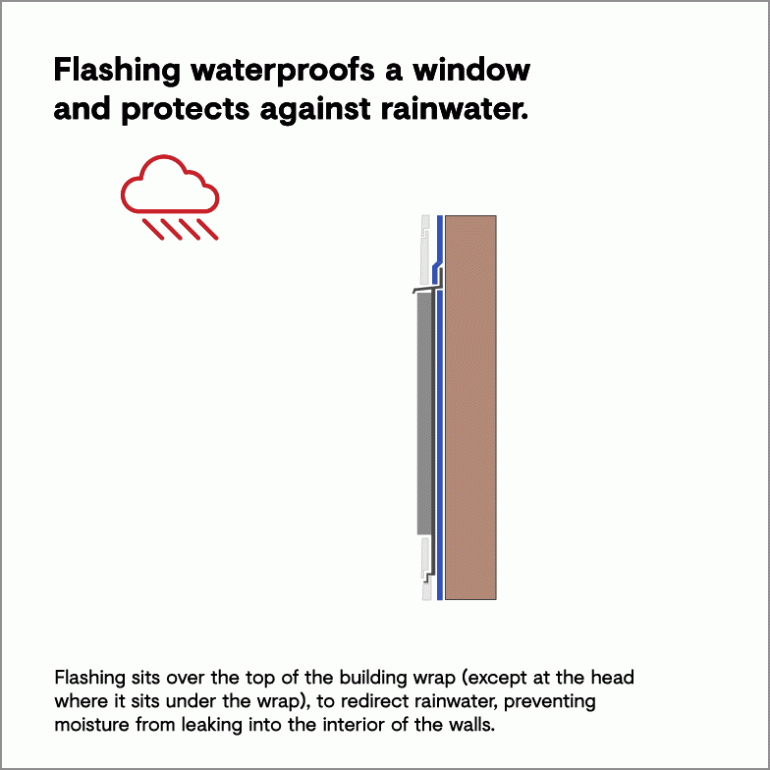
Locally made
Compliance & Standards
Water damage is one of the most common and expensive issues homeowners face. And one of the most vulnerable areas? Your windows. Without proper protection, water can slowly seep in around the frames, leading to mould, wood rot, and even structural damage. The worst part? You often don’t see the damage until it’s too late.
That’s where window flashing comes in. It acts as a discreet but powerful barrier, directing rainwater away from your windows and doors before it can reach the interior of your home.
Whether you’re building, renovating, or just want peace of mind that your home is weather-ready, we can help you choose the right flashing to keep your windows and doors protected for years to come.
Flashing on your windows and doors achieves one thing: safeguarding your home’s interior by preventing rainwater from seeping into the structure around these entry points. Flashing helps to ensure a watertight seal, which is why it is now a requirement for new builds.
So, where does flashing come in during a build? New homes typically feature a timber frame with exterior cladding such as brick veneer or weatherboard. Between the timber frame and cladding, a waterproof building wrap is installed to create an extra layer of defence against rain. Flashing sits over the top of this building wrap to redirect rainwater.

There are three main ways flashing helps to protect your home from water damage.
1. Redirecting water away from your building
The most fundamental way flashing protects your home is to redirect water away from seams and joints.
2. Creating a barrier against the elements
Flashing helps prevent wind-driven rain and dirt from settling in the gaps between building materials. Regulations have been introduced in Australia to ensure flashing is introduced in all new builds for this reason. The waterproof barrier created by flashing ensures that even under high wind conditions, water is not forced into the building.
3. Sealing gaps created by different materials
Many homes use multiple materials for exterior cladding, such as brick veneer, wood, vinyl, and metal. These materials act differently with changes in temperature and moisture, contracting and expanding at different rates. Flashing helps to seal the gaps between different materials at these times. For windows and doors, a builder needs to install flashing separately to help protect them from water damage.
Want to know more? Get an in-depth run-through of the types of flashing available in our guide for builders.
As part of the National Construction Code, flashing is now mandatory when constructing a new home. If you don’t have effective and compliant flashing for your openings, such as windows and doors, there are two potential consequences.
The tricky thing with water damage is that it’s hard to spot when it occurs and costly to repair once you know. Damage can range from warped and cracked materials, swollen timber/floorboards, or even mould, making it potentially dangerous for you to live in.
Approval failures
Flashing (or a lack of it) is very easy to identify. If you’re building a new home/building, an independent inspector or a state-based building authority is likely to list your project as being non-compliant. This can delay your certificate of occupancy and result in extra costs to remove all your cladding and plaster work, install flashing, re-plaster, repaint, and then finally reapply your cladding.
Note: beyond your windows and doors, the NCC also lists flashing in other areas of your build, especially your roofing.
When selecting windows and doors, you don’t have to have flashing from the factory, but if not, your builder needs to install it on site.
There are three main types of flashing to consider for your build:
A&L is now offering factory-fit flashings to fully comply with the NCC requirements under AS/NZS 2904-1995. Our team can help you and your team – from specifiers and architects through to builders – to understand what flashing products are best for your project.
To discuss what flashing is best for your window and door designs, simply get in touch today.